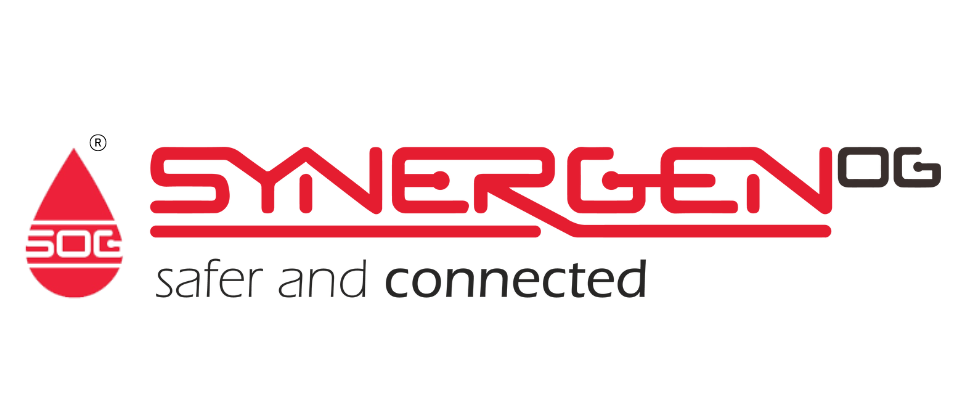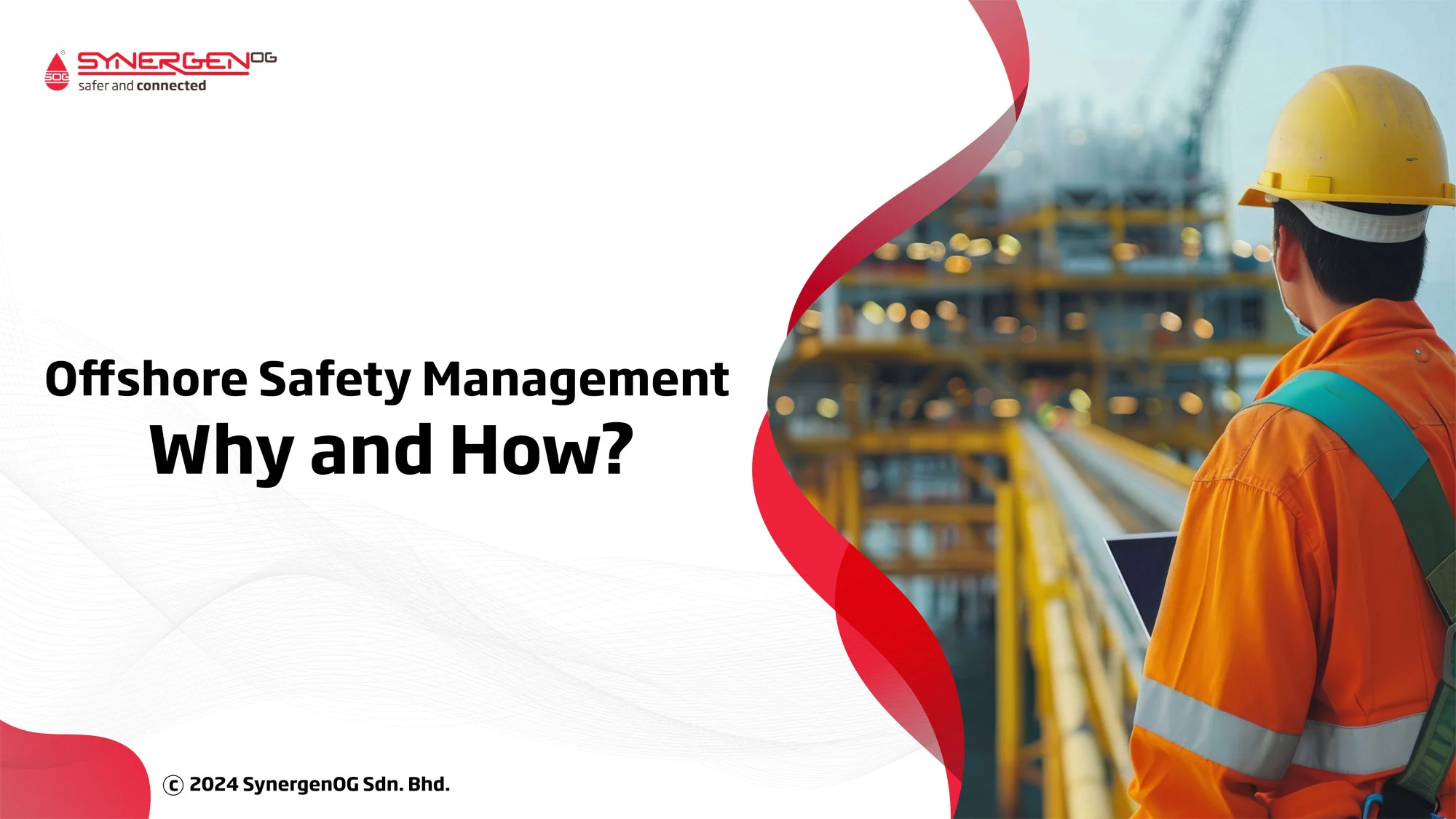| Summary: Discover how offshore safety management in oil and gas changes from the concept to the operational phase, and explore practical examples of safety controls, including engineering systems, mitigation measures, and emergency response protocols.. |
Offshore oil and gas facilities are designed to extract hydrocarbons from beneath the seabed, process them, and in some cases, store and transport them to onshore facilities. Some of such key facilities are fixed platforms, Floating Production Storage and Offloading (FPSO) Units, Semi-Submersible Platforms and Floating Liquefied Natural Gas (FLNG) Platforms.
These offshore oil and gas facilities are integral parts of global energy production, operating in some of the harshest and most remote environments on earth making safety management critical. Failure can have devastating consequences, affecting human life, the environment, and infrastructure.
To navigate these challenges, effective safety management systems must be in place throughout the entire lifecycle of offshore facilities. This includes planning, design, construction, and operational phases. Safety management is not static—it evolves as the facility moves through different stages, and each phase requires a tailored approach to risk mitigation. This article will explore offshore safety management with a focus on phase-specific approaches and the application of the Hierarchy of Controls.
The Facility Phase-Specific Approaches for Offshore Safety Management
1. Inherent Risk
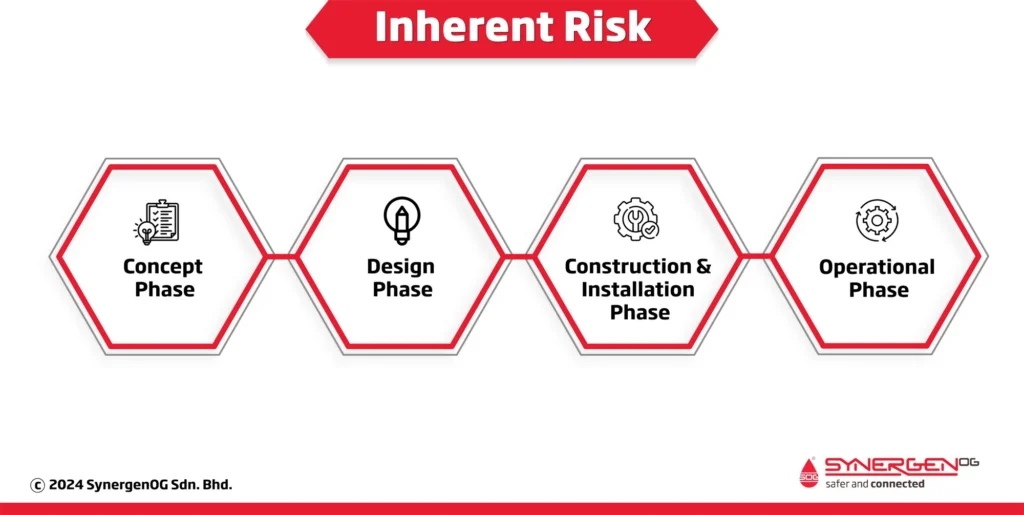
The framework of inherent risk is a holistic aim throughout all phases of a oil and gas development emphasizing continuous risk reduction throughout the entire lifecycle of the facility, beginning at the earliest stages of development. The key phases involved in a facility lifecycle include,
- Concept Phase
- Design Phase
- Construction and Installation Phase
- Operational Phase
At each phase, different safety and risk reduction measures are applied, with the most effective and long-lasting solutions implemented early on, during the Concept and Design phases. By progressively reducing risk throughout the lifecycle, operators can prevent hazards from becoming major issues during operations, where mitigation options are typically more costly and less effective.
2. The Hierarchy of Controls
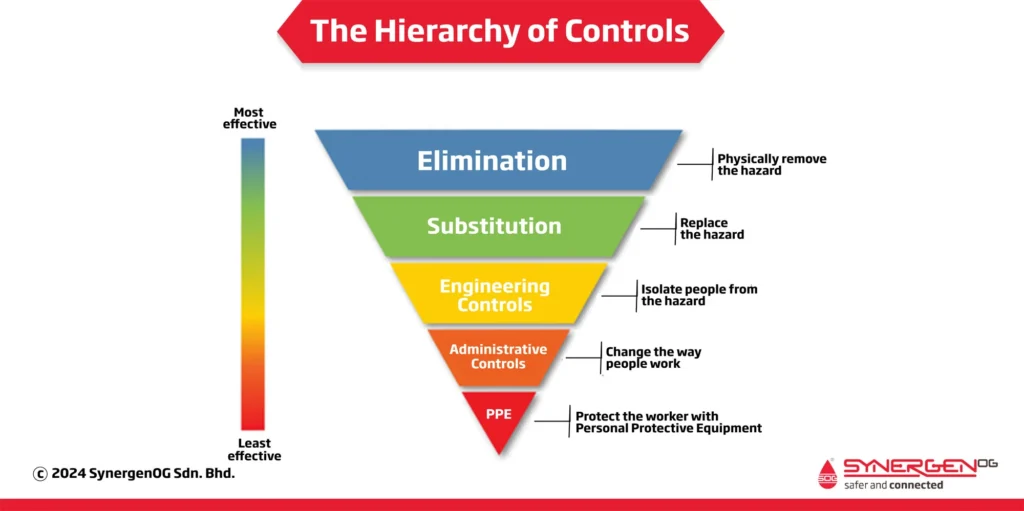
The Hierarchy of Controls offers a structured approach that focuses on controlling hazards at the source whenever possible, rather than relying on human behavior or personal protective equipment (PPE) alone. It follows a pyramid model with five levels of control, starting with the most effective methods at the top and progressing to less reliable, though still necessary, measures at the bottom.
Understanding the Hierarchy of Controls
- Elimination (Most Effective)
Elimination involves completely removing the hazard from the work environment. This is the most effective control measure because it entirely prevents exposure to the hazard. However, elimination is typically feasible only during the early stages of a project, such as the Concept or Design Phases, where strategic decisions can be made to avoid introducing hazards.
E.g. In the design phase of an offshore facility, engineers might choose to eliminate the need for manual valve adjustments by automating the process. This removes the need for workers to enter hazardous areas, significantly reducing the risk of injury or exposure to dangerous conditions.
2. Substitution
When elimination is not possible, the next best approach is substitution, which involves replacing a hazardous material, process, or piece of equipment with a less dangerous alternative. Substitution reduces the severity of the hazard but does not entirely remove it. Like elimination, substitution is most effectively applied during the early planning stages.
E.g. A common example in offshore operations is the substitution of toxic chemicals with less hazardous alternatives. For instance, replacing traditional drilling fluids with water-based or synthetic-based mud systems can reduce the exposure of workers and the environment to harmful chemicals.
3. Engineering Controls
Engineering controls focus on isolating people from hazards by redesigning equipment, processes, or the work environment. These controls are inherently safer because they do not depend on worker behavior to be effective. Engineering controls reduce the hazard by either enclosing it or using technology to minimize exposure.
E.g. Offshore oil and gas facilities rely heavily on engineering controls to mitigate risks. Fire and gas detection systems are critical for early detection of potential hazards, such as gas leaks or fires. Once detected, the system can trigger alarms, initiate emergency shutdowns, and activate fire suppression systems to isolate the hazard.
Read:Fire and Explosion Hazards
Blowout Preventers (BOPs) are another critical engineering control used in drilling operations to prevent uncontrolled releases of oil or gas from the well.
Additional Engineering controls examples include:
- Emergency Shutdown Systems (ESD): Automatically shut down processes in response to abnormal operating conditions, reducing the risk of accidents.
- Pressure Relief Valves: Installed on high-pressure equipment to safely release pressure buildup, preventing equipment failure or explosion.
4. Administrative Controls
Administrative controls involve changing how people work. This can include implementing policies, procedures, training, or other systems that guide safe work practices. While necessary, administrative controls are less reliable than elimination, substitution, or engineering controls because they rely on human behavior. These measures are often used in conjunction with other controls to ensure that risks are managed effectively.
E.g. In offshore operations, permit-to-work systems are widely used to control high-risk activities, such as hot work (e.g., welding or cutting) and confined space entry. Workers must follow strict protocols and obtain approval before carrying out such tasks. Additionally, offshore platforms often implement rotation schedules to prevent fatigue, a common risk factor in the 24-hour operations typical of offshore work.
Another key example is, safety training and drills. Workers are regularly trained on emergency procedures, such as fire or evacuation drills, to ensure they know how to respond quickly and effectively in a crisis.
- Personal Protective Equipment (PPE) (Least Effective)
PPE is considered the last line of defense in the hierarchy of controls. While it is important, PPE does not reduce or eliminate the hazard itself. Instead, it reduces the impact of exposure on the individual. PPE is often used in conjunction with other controls, particularly when the risk cannot be entirely mitigated through elimination, substitution, or engineering control.
E.g. In offshore environments, workers frequently wear flame-resistant clothing (FRC) to protect themselves from fire hazards, especially in areas with a high risk of flash fires. Respiratory protection is also commonly required in areas where gas leaks or toxic fumes may be present. In addition, fall protection systems are critical for workers performing maintenance or inspection tasks at height, such as on offshore cranes or derricks.
Applying the Hierarchy of Controls in a Facility Risk Reduction Life Cycle
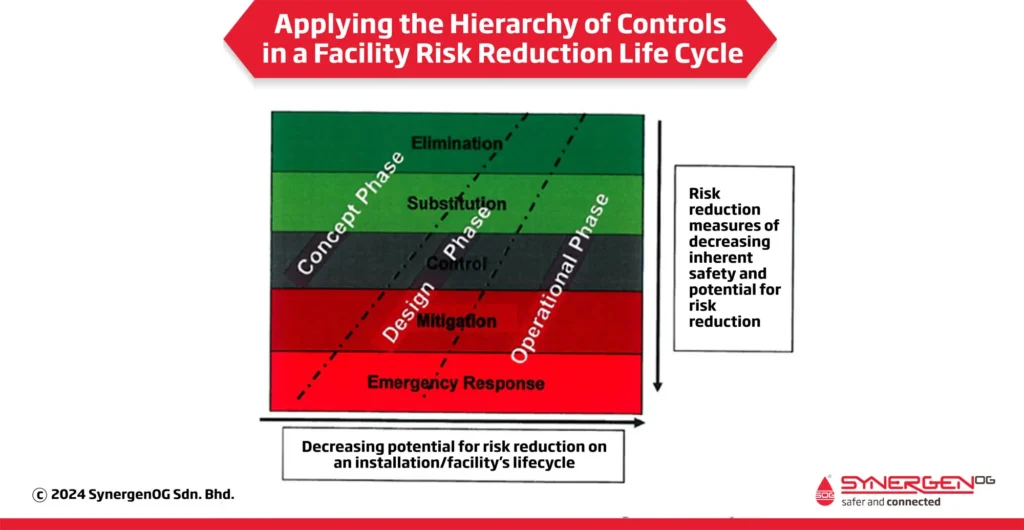
The typical application of the control measures for a given oil and gas development varies according to the phase the development is in. This is clearly illustrated in the following diagram, whereby early / concept phase developments have greater emphasis on elimination / substitution type measures compared with those in operational phase.
Early Stages (Concept and Design Phases)
Elimination and Substitution: At the early stages of a project, elimination and substitution offer the greatest opportunities for risk reduction. These decisions are often driven by hazard identification studies (such as HAZID), which assess potential risks in the design and location of the facility.
Engineering Controls: By embedding engineering controls into the facility’s design, offshore operators can mitigate risks from the outset. This approach is much more cost-effective than retrofitting safety features once the platform is operational.
Operational Stage
Engineering and Administrative Controls: During operations, engineering controls—such as automatic shutdown systems, gas detection, and fire suppression—become the primary defenses against hazards. Administrative controls also play a significant role, with comprehensive safety protocols and rigorous training ensuring workers are well-prepared to handle routine and emergency situations.
PPE: While PPE remains essential in offshore environments, it is treated as a last resort. Reliance on PPE alone is avoided whenever possible, as it does not prevent the hazard itself but simply limits its effects on individual workers.
Conclusion
The offshore oil and gas industry demands effective risk management due to its hazardous nature. By informed application of Hierarchy of Controls, operators can optimise resources by applying appropriate measures for the project phase. Early risk elimination or substitution occurs in the Concept and Design Phases, while engineering controls and administrative measures mitigate risks during construction and operations. PPE serves as a final defense. Prioritizing higher control measures ensures hazard control at the source, creating a safer, more efficient, and compliant operation while reducing long-term risks and costs.
Looking for SynergenOG safety management consultation? Make an Enquiry
